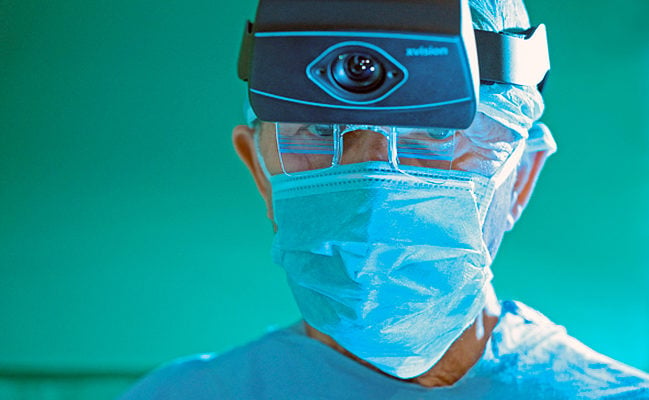The headset by Israel-based Augmedics projects X ray-like 3D visualization of the patient in real time, allowing surgeons to “see” through the patient’s skin, muscle tissue, and bone.
By Adi Pick, Calcalist
Ever chose “X-ray vision” as your choice of hypothetical superpower?
Israel-based Augmedics Ltd. has developed a set of goggles giving surgeons X-ray like visualization capabilities.
Augmedics develops an augmented reality headset for surgical procedures. Called xvision, the headset projects X ray-like 3D visualization of the patient in real time, allowing surgeons to “see” through the patient’s skin, muscle tissue and bone.
The imaging is projected onto the surgeons’ retina using the transparent display headset, allowing surgeons to simultaneously look at their patient, as well as seeing the necessary navigation data without averting their eyes to a remote screen.
The headset is intended for use in surgeries where a reference to a rigid anatomical structure, like the spine or the pelvis, can be identified.
Clinical trials of the headset in minimally invasive spine surgeries are underway in Israel since August, Augmedics’ CEO Nissan Elimelech said in a Tuesday interview with Calcalist. So far the device has been used in six surgeries.
Founded in 2014, Augmedics is based in the northern Israeli town of Yokne’am. The company has raised $8.3 million to date, in addition to the $2.4 million of grant funding the company received from the Israel Innovation Authority, according to Pitchbook data. It employs 20 people.
In April, the company completed its second cadaver study using its headsets John Hopkins Hospital. During the study, the surgeons placed 120 pedicle screws in five different cadavers.
“With xvision, I can actually see the details of the three-dimensional anatomy through the patient,” Dr. Daniel Sciubba, professor of neurological surgery, oncology and orthopedic surgery at the Johns Hopkins University School of Medicine said in a statement following the completion of the second cadaver study.
“It is lightweight, easy to use, and translucent, so you can see through the actual image.”
Augmedics plans to sell Xvision to hospitals at cheaper prices than conventional surgical navigation systems, setting hospitals back several tens of thousands of dollars as opposed to hundreds of thousands, according to Elimelech.
The company also plans to sell one-time use markers necessary for the imaging projection at several hundred dollars per piece, Elimelech added.





